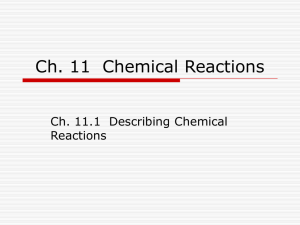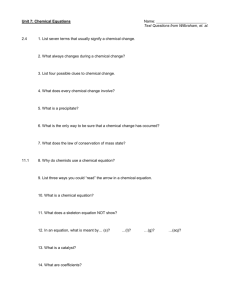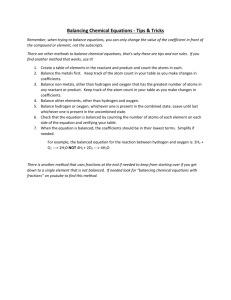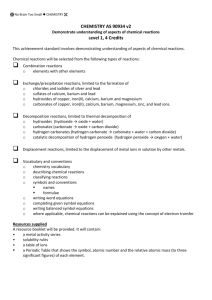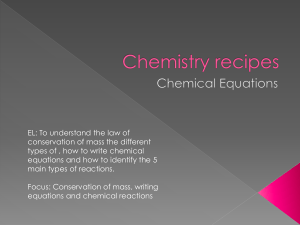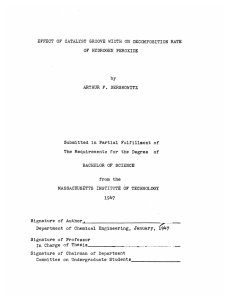Chemical Equations
advertisement
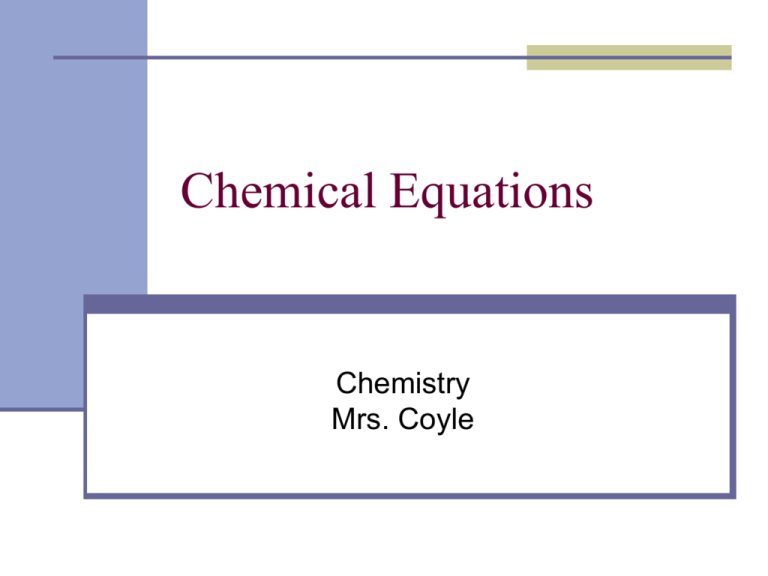
Chemical Equations Chemistry Mrs. Coyle Chemical Equations: represent chemical reactions Word Equations Skeleton Chemical Equations Balanced Chemical Equations Word Equations: show the names of the reactants and the products Reactants Products Methane + Oxygen Carbon Dioxide + Water The arrow (yield sign) and indicates that a reaction took place. Skeleton Chemical Equations The formulas of the reactants and products are written without indicating their relative amounts. Example: CH4+ O2 CO2 +H2O Balanced Chemical Equations The chemical formulas and the relative amounts of the reactants and products are written. Example: CH4 + 2O2 CO2 + 2H2O The coefficients indicate the relative amounts of each substance. Equal number of atoms of each element must appear on both sides of the balanced equation. Why does a chemical reaction have to be balanced? In any chemical or physical change, mass is neither created or destroyed Mass is CONSTANT Law of Conservation of Mass (Antoine Lavoisier) Combustion of Methane CH4 + 2O2 CO2 + Atoms are rearranged! 2H2O Example: Decomposition of hydrogen peroxide in the presence of a catalyst. Word equation: hydrogen peroxide water + oxygen Example: Decomposition of hydrogen peroxide in the presence of a catalyst. Skeleton equation: H 2O 2 H 2O + O2 Example: Decomposition of hydrogen peroxide in the presence of a catalyst. Balanced Equation: 2H2O2 2H2O + O2 Example: Decomposition of hydrogen peroxide in the presence of a catalyst. Balanced equation showing the catalyst (MnO2) the state of the reactants and products: MnO2 2H2O2(l) 2H2O (l) + O2 (g)



